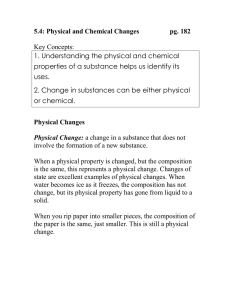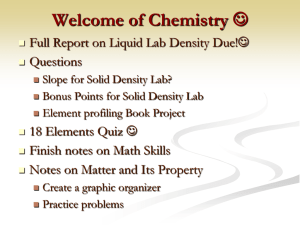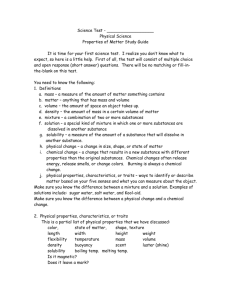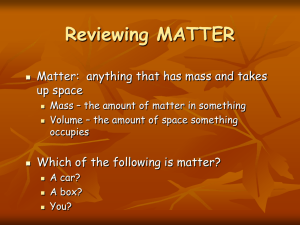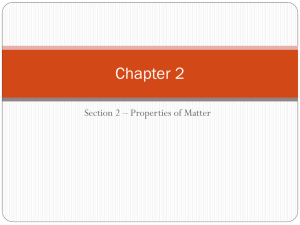Chapter 5 Review Key - Leon County Schools
advertisement
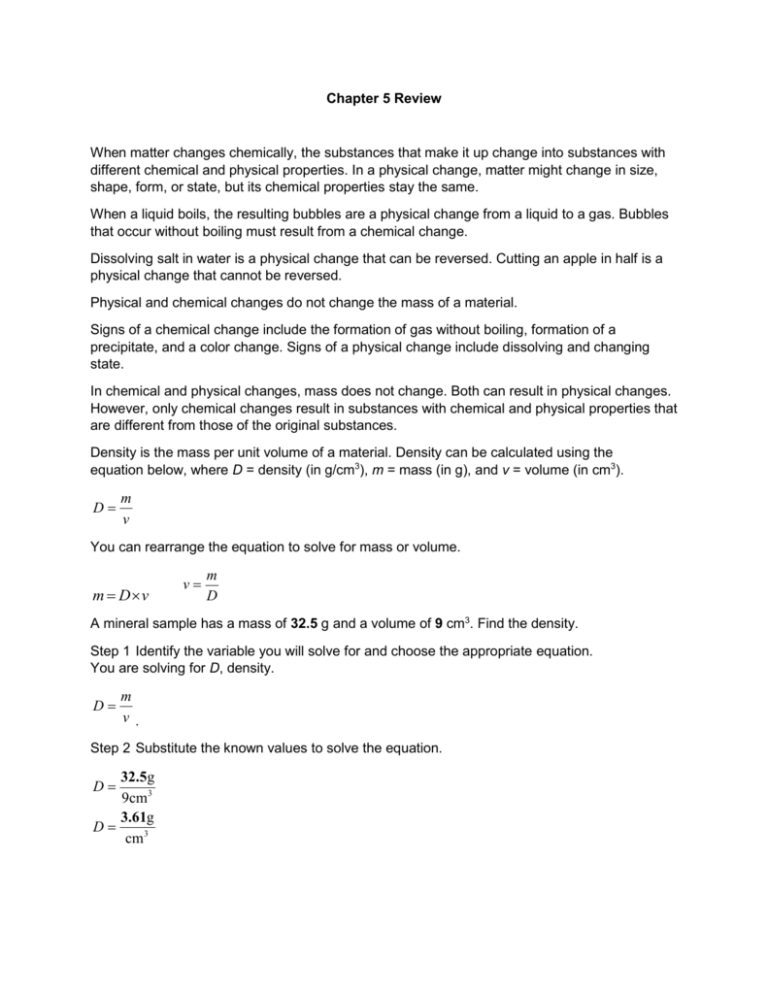
Chapter 5 Review When matter changes chemically, the substances that make it up change into substances with different chemical and physical properties. In a physical change, matter might change in size, shape, form, or state, but its chemical properties stay the same. When a liquid boils, the resulting bubbles are a physical change from a liquid to a gas. Bubbles that occur without boiling must result from a chemical change. Dissolving salt in water is a physical change that can be reversed. Cutting an apple in half is a physical change that cannot be reversed. Physical and chemical changes do not change the mass of a material. Signs of a chemical change include the formation of gas without boiling, formation of a precipitate, and a color change. Signs of a physical change include dissolving and changing state. In chemical and physical changes, mass does not change. Both can result in physical changes. However, only chemical changes result in substances with chemical and physical properties that are different from those of the original substances. Density is the mass per unit volume of a material. Density can be calculated using the equation below, where D = density (in g/cm3), m = mass (in g), and v = volume (in cm3). D m v You can rearrange the equation to solve for mass or volume. m Dv v m D A mineral sample has a mass of 32.5 g and a volume of 9 cm3. Find the density. Step 1 Identify the variable you will solve for and choose the appropriate equation. You are solving for D, density. D m v . Step 2 Substitute the known values to solve the equation. 32.5g 9cm 3 3.61g D cm 3 D A chemical change produces new substances with different chemical and physical properties. A physical change results only in changes to physical properties—the substance itself does not change. Physical Changes Melting Boiling Changing shape Mixing Dissolving Chemical Changes changing color burning rusting forming a gas forming a precipitate Law of Conservation of Mass – The total mass before a chemical reaction is the same as the total mass after the chemical reaction. The identity of a substance does not change during a physical change such as a change in the state of matter – ice, liquid water, water vapor A new substance is produced during a chemical change. Physical Properties include: Mass and Weight Volume Density Conductivity Solubility Melting and Boiling point Magnetism Separating mixtures (can be separated such as salt and water)
